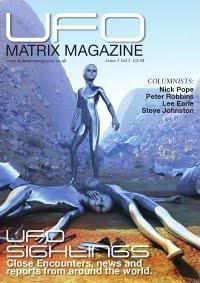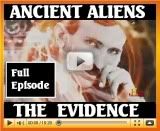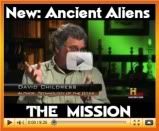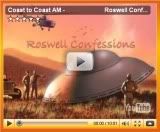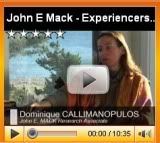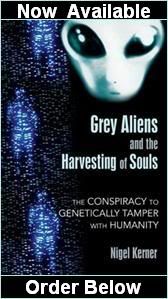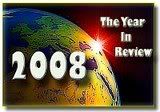Wednesday, December 7, 2011
EARTH'S TWIN? NASA's Kepler Mission Announces Latest Discovery
WATCH THIS ONE FIRST - THEN NASA VIDEO
The Kepler mission's science team announced its latest finding at a press conference on Monday, Dec. 5, 2011. The team announced the confirmation of Kepler-22b, its first planet found in the "habitable zone," the region where liquid water could exist on a planet's surface. The planet is about 2.4 times the radius of Earth, orbits around a star similar to our sun and is located 600 light-years away. Scientists don't yet know if Kepler-22b has a predominantly rocky, gaseous or liquid composition, but its discovery is a step closer to finding Earth-like planets. The planet's host star belongs to the same class as our sun, called G-type, although it is slightly smaller and cooler.
Kepler also has discovered 1,094 new planet candidates, nearly doubling its previously known count. Since the last catalog was released in February, the number of planet candidates identified by Kepler has increased by 89 percent and now totals 2,326. Of these, 207 are approximately Earth-size, 680 are super Earth-size, 1,181 are Neptune-size, 203 are Jupiter-size and 55 are larger than Jupiter. The findings, based on observations conducted May 2009 to September 2010, show a dramatic increase in the numbers of smaller-size planet candidates.
NASA
KEPLER-22B may be the most Earth-like world yet found in the galaxy — and it could be home to alien life.
It orbits a star like the Sun 600 light years — that's nearly 4,000BILLION MILES — away in the constellation Cygnus.
Importantly, the planet lies inside the habitable zone of its solar system, so-called because it is not too hot and not too cold for life to exist. Water — an essential requirement for life as we know it — would be a liquid.
Christmas would come around sooner there every year, because it takes just 290 days to go round its parent star.
Scientists cannot tell for sure yet whether Kepler-22b is a rocky world, a ball of gas or even a liquid object.
But its discovery, announced this week, suggests we're getting closer to discovering we're not alone in the universe.
The Kepler mission's science team announced its latest finding at a press conference on Monday, Dec. 5, 2011. The team announced the confirmation of Kepler-22b, its first planet found in the "habitable zone," the region where liquid water could exist on a planet's surface. The planet is about 2.4 times the radius of Earth, orbits around a star similar to our sun and is located 600 light-years away. Scientists don't yet know if Kepler-22b has a predominantly rocky, gaseous or liquid composition, but its discovery is a step closer to finding Earth-like planets. The planet's host star belongs to the same class as our sun, called G-type, although it is slightly smaller and cooler.
Kepler also has discovered 1,094 new planet candidates, nearly doubling its previously known count. Since the last catalog was released in February, the number of planet candidates identified by Kepler has increased by 89 percent and now totals 2,326. Of these, 207 are approximately Earth-size, 680 are super Earth-size, 1,181 are Neptune-size, 203 are Jupiter-size and 55 are larger than Jupiter. The findings, based on observations conducted May 2009 to September 2010, show a dramatic increase in the numbers of smaller-size planet candidates.
NASA
KEPLER-22B may be the most Earth-like world yet found in the galaxy — and it could be home to alien life.
It orbits a star like the Sun 600 light years — that's nearly 4,000BILLION MILES — away in the constellation Cygnus.
Importantly, the planet lies inside the habitable zone of its solar system, so-called because it is not too hot and not too cold for life to exist. Water — an essential requirement for life as we know it — would be a liquid.
Christmas would come around sooner there every year, because it takes just 290 days to go round its parent star.
Scientists cannot tell for sure yet whether Kepler-22b is a rocky world, a ball of gas or even a liquid object.
But its discovery, announced this week, suggests we're getting closer to discovering we're not alone in the universe.
Labels:
earths twin,
kepler 22b,
nasa
Tuesday, August 23, 2011
ALIEN ABDUCTION PIONEER BUDD HOPKINS PASSES AWAY
The Pioneer of Abduction Research
June 15, 1931 – August 21, 2011

I’m very sad to announce that Budd Hopkins died August 21, at 1:35 pm. Budd had been under hospice care for about three weeks, at his home in New York. The combination of liver cancer and pneumonia led to his death. His daughter Grace Hopkins-Lisle and I were with him almost continuously during these past weeks. He was not in any pain throughout any of the process, and he received the best possible care and loving support from those closest to him. Today he gradually slipped away, and simply quietly stopped breathing. He died peacefully and without any struggle, with Grace, Grace’s husband Andrew, and me by his side.
To learn more about Budd Hopkins watch the following video series.
http://aliencasebook.blogspot.com/2008/12/videos-true-stories-of-alien-encounters.html
Friday, January 7, 2011
RE: MAC TONNIES POST-MAC-BLUES
No, I am still in hiatus in regards to blogging however, I received something in an email this evening that I thought many of you would like to see.
I'm essentially going to send you to two addresses, since I think you might like to bookmark both of them. The first address will lead you to a second, which will then address an article that is going to be published in the New York Times about Mac and his online legacy.
Here is the first address. Click on the macbots link.
macbots
Once in, bookmark that blog you're in for a looksee someday and then click on the highlighted link in the only paragraph called POST-MAC-BLUES.
When it opens, it will then be self explanatory and provide the link you'll need in order to read the New York Times article now, which will not be published in the paper until January 9th.
On another note, I am working now. I got a Job at Marshalls. Nothing earth shattering $$ wise but at least I'm working. As well as working for them, I invested in a WordPerfect for DOS and will soon be typing Court reports (at home of all things) for an attorney service. It's a pay for page kind of thing so that means I'll be typing my fingers to the bones in order to make ends meet while I continue working for Marshalls.
What's really killing me are the gas prices. I'm having to drive 45 minutes to and from work each day. Our gas here in Cook County, IL is currently $3.39 a gallon. Ouch! I swear, I think I'm working for the petroleum companies sometimes. lol
Anyway, please read the New York Times article. It's very, very interesting and I am ecstatic that they used Mac as their example for that article. It's quite a few pages long but a very good read about what happens to our online work if we suddenly die such as Mac did at 34 years old.
Eileen (aka: Atrueoriginall)
I'm essentially going to send you to two addresses, since I think you might like to bookmark both of them. The first address will lead you to a second, which will then address an article that is going to be published in the New York Times about Mac and his online legacy.
Here is the first address. Click on the macbots link.
macbots
Once in, bookmark that blog you're in for a looksee someday and then click on the highlighted link in the only paragraph called POST-MAC-BLUES.
When it opens, it will then be self explanatory and provide the link you'll need in order to read the New York Times article now, which will not be published in the paper until January 9th.
On another note, I am working now. I got a Job at Marshalls. Nothing earth shattering $$ wise but at least I'm working. As well as working for them, I invested in a WordPerfect for DOS and will soon be typing Court reports (at home of all things) for an attorney service. It's a pay for page kind of thing so that means I'll be typing my fingers to the bones in order to make ends meet while I continue working for Marshalls.
What's really killing me are the gas prices. I'm having to drive 45 minutes to and from work each day. Our gas here in Cook County, IL is currently $3.39 a gallon. Ouch! I swear, I think I'm working for the petroleum companies sometimes. lol
Anyway, please read the New York Times article. It's very, very interesting and I am ecstatic that they used Mac as their example for that article. It's quite a few pages long but a very good read about what happens to our online work if we suddenly die such as Mac did at 34 years old.
Eileen (aka: Atrueoriginall)
Labels:
Mac Tonnies,
New York Times
Subscribe to:
Posts (Atom)


